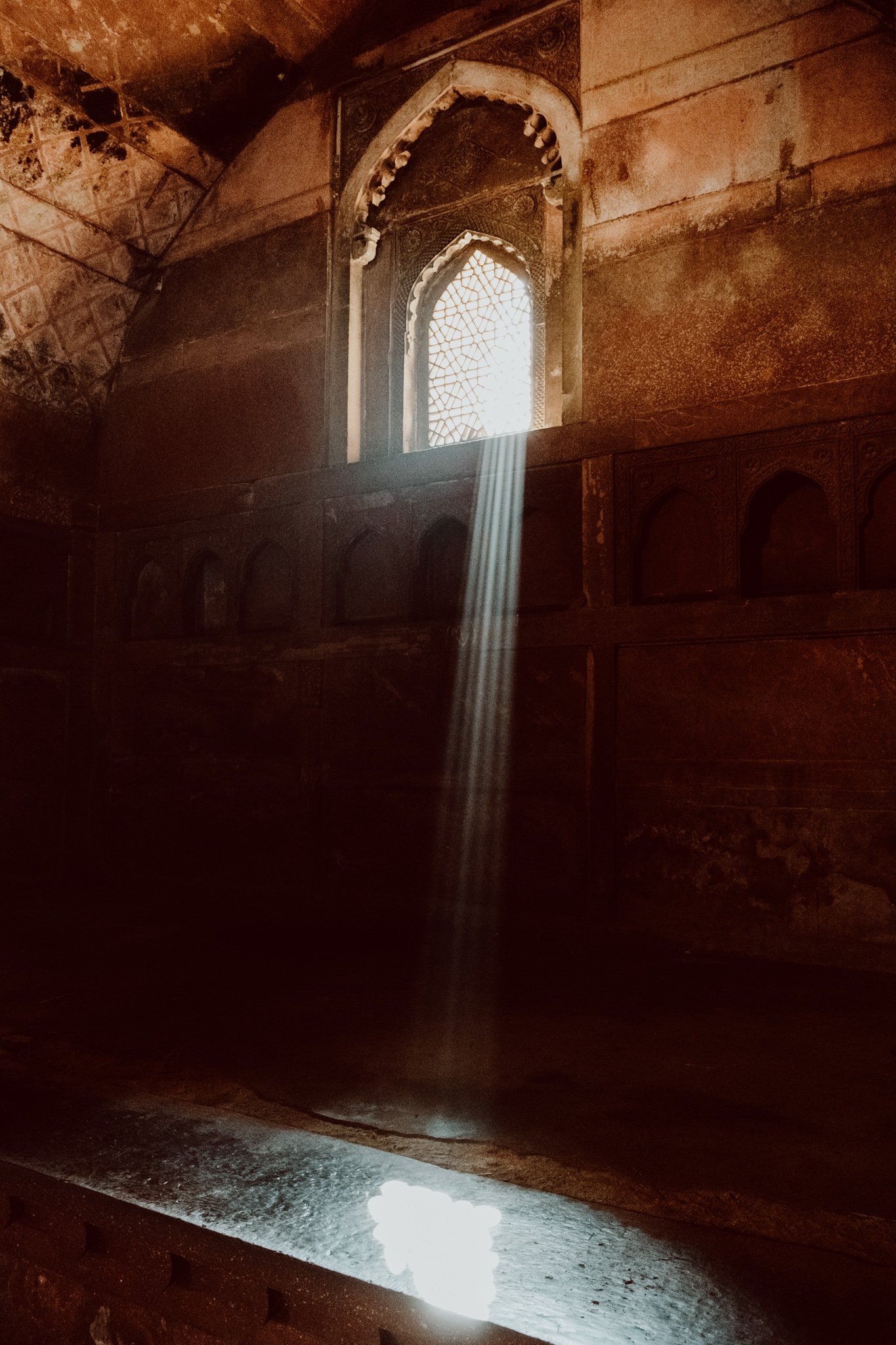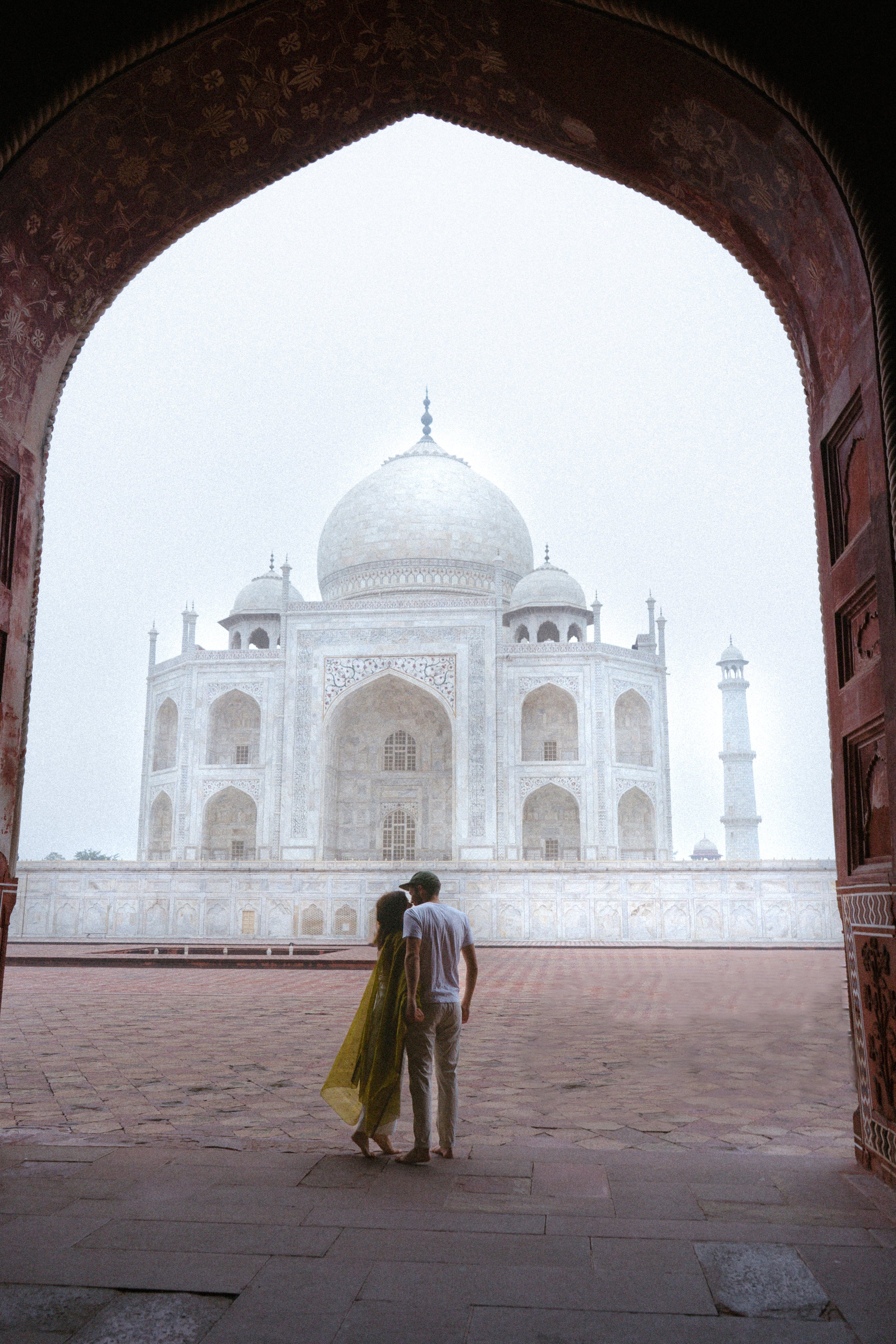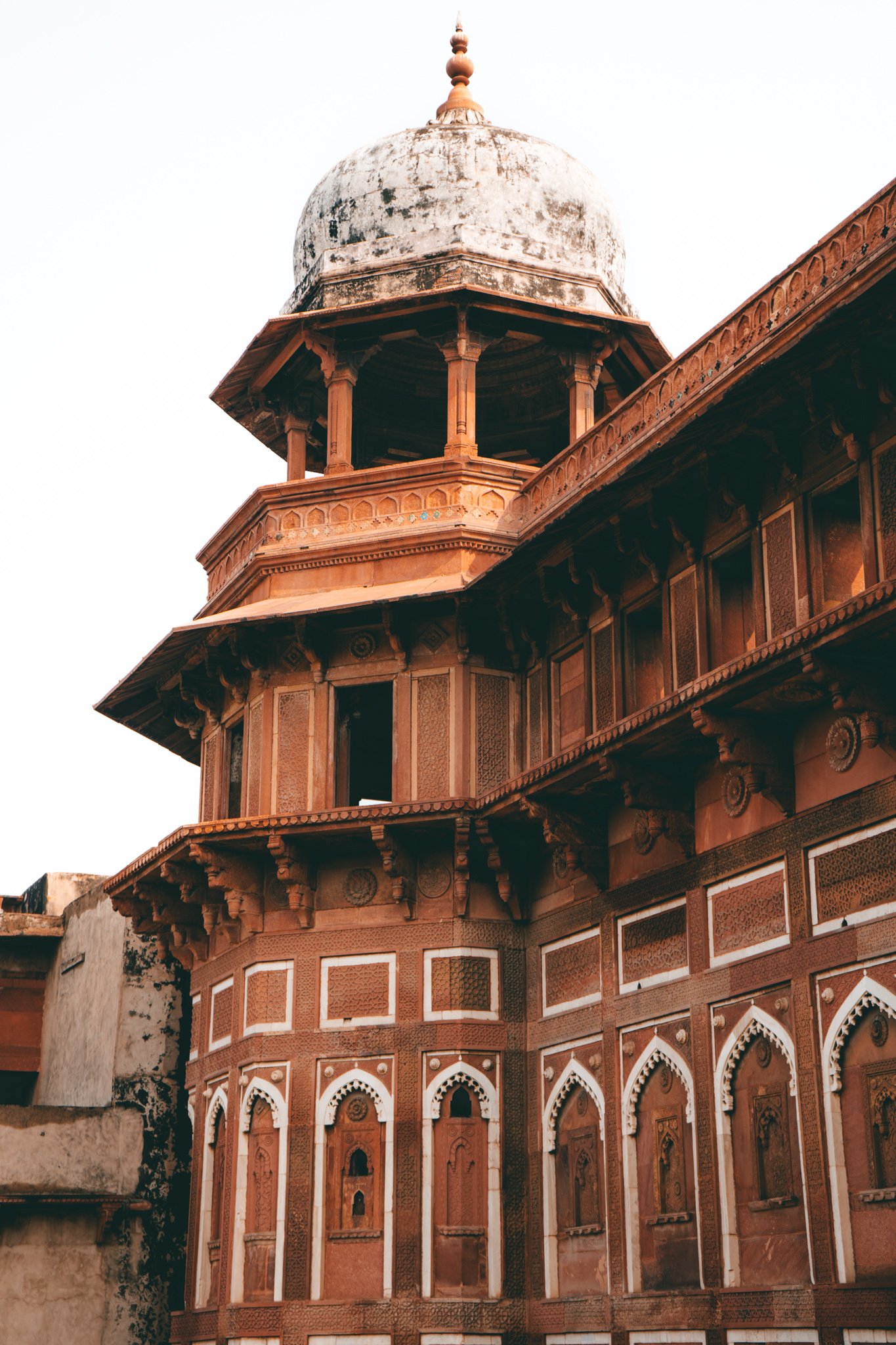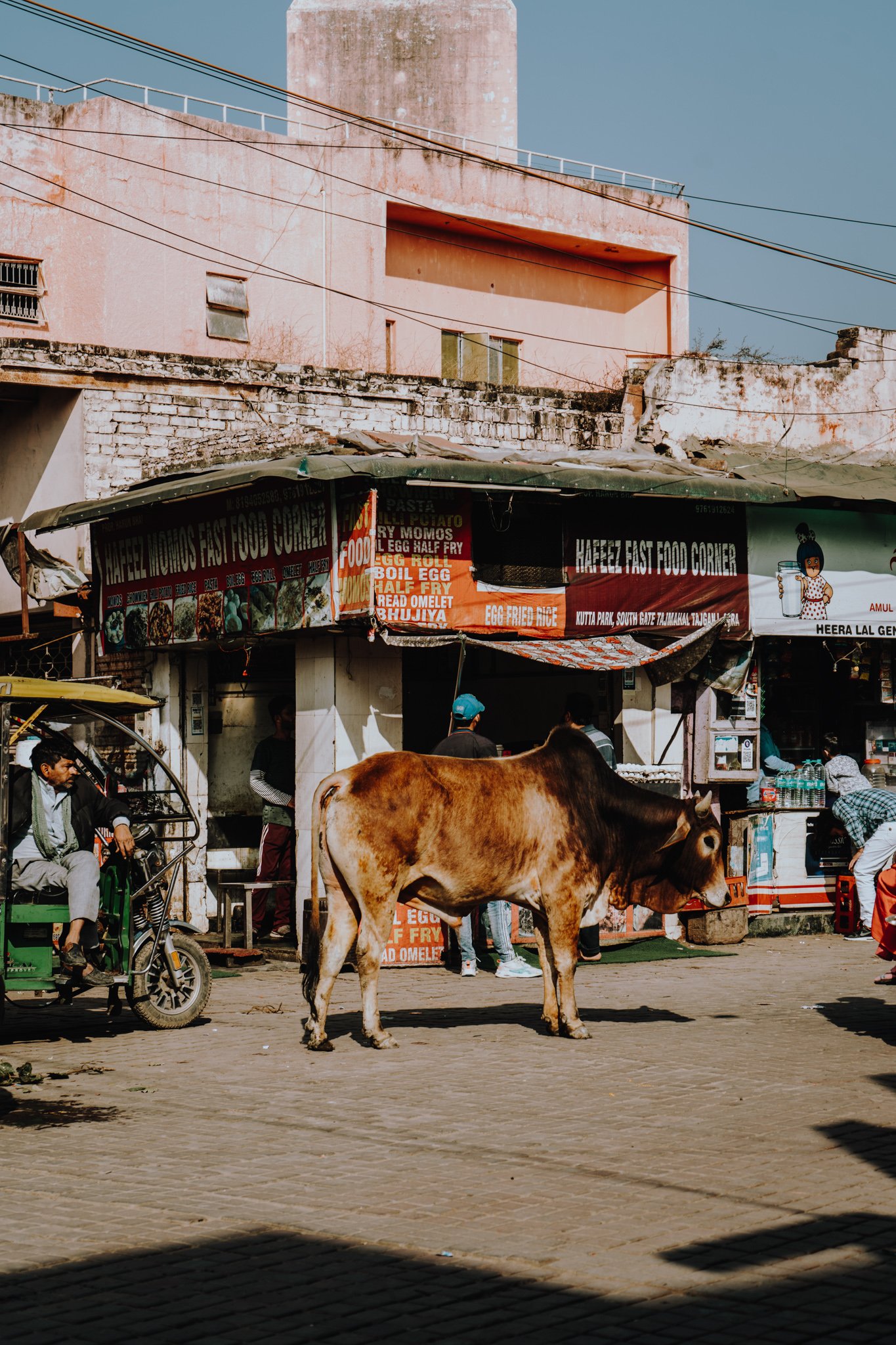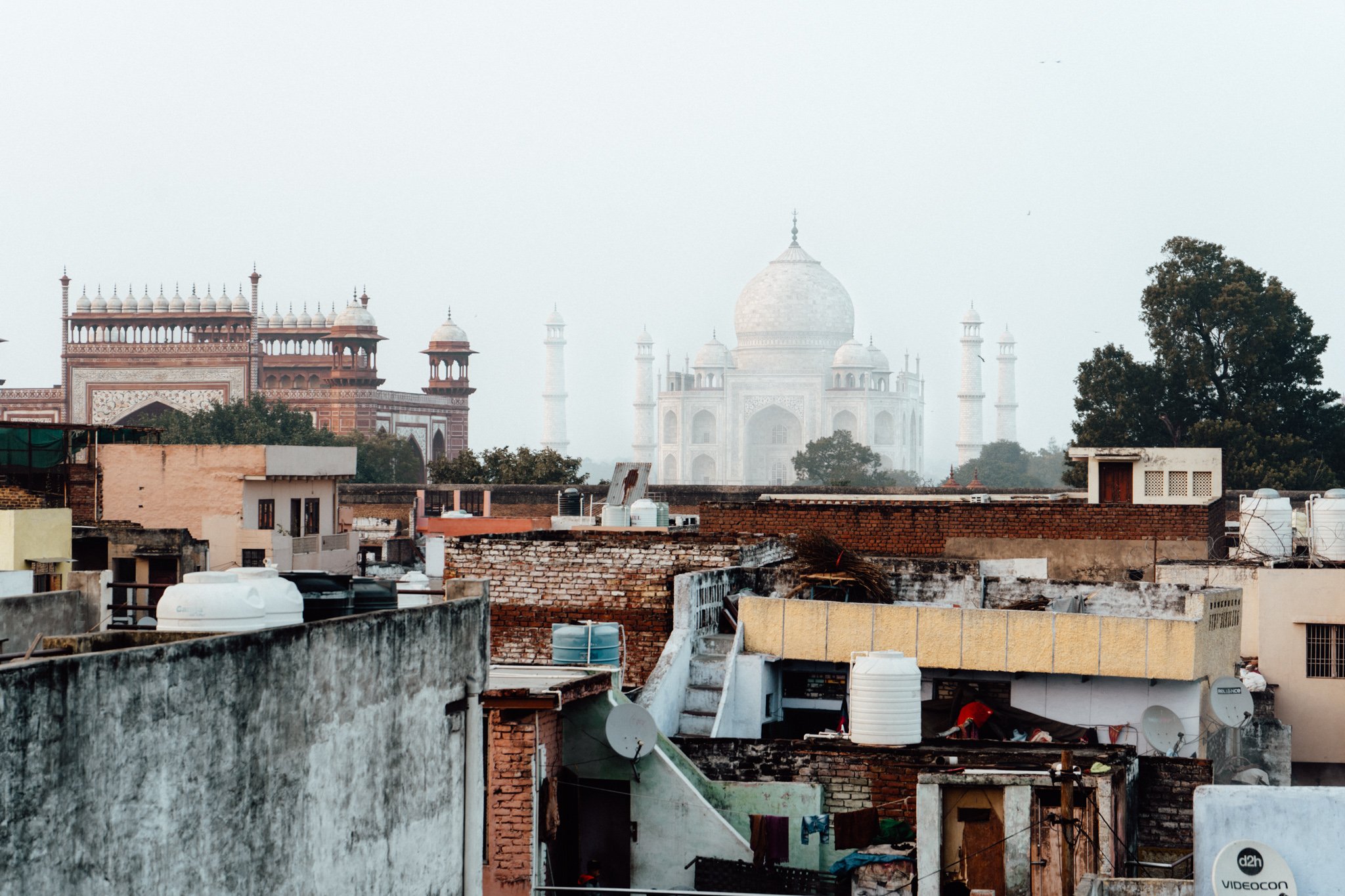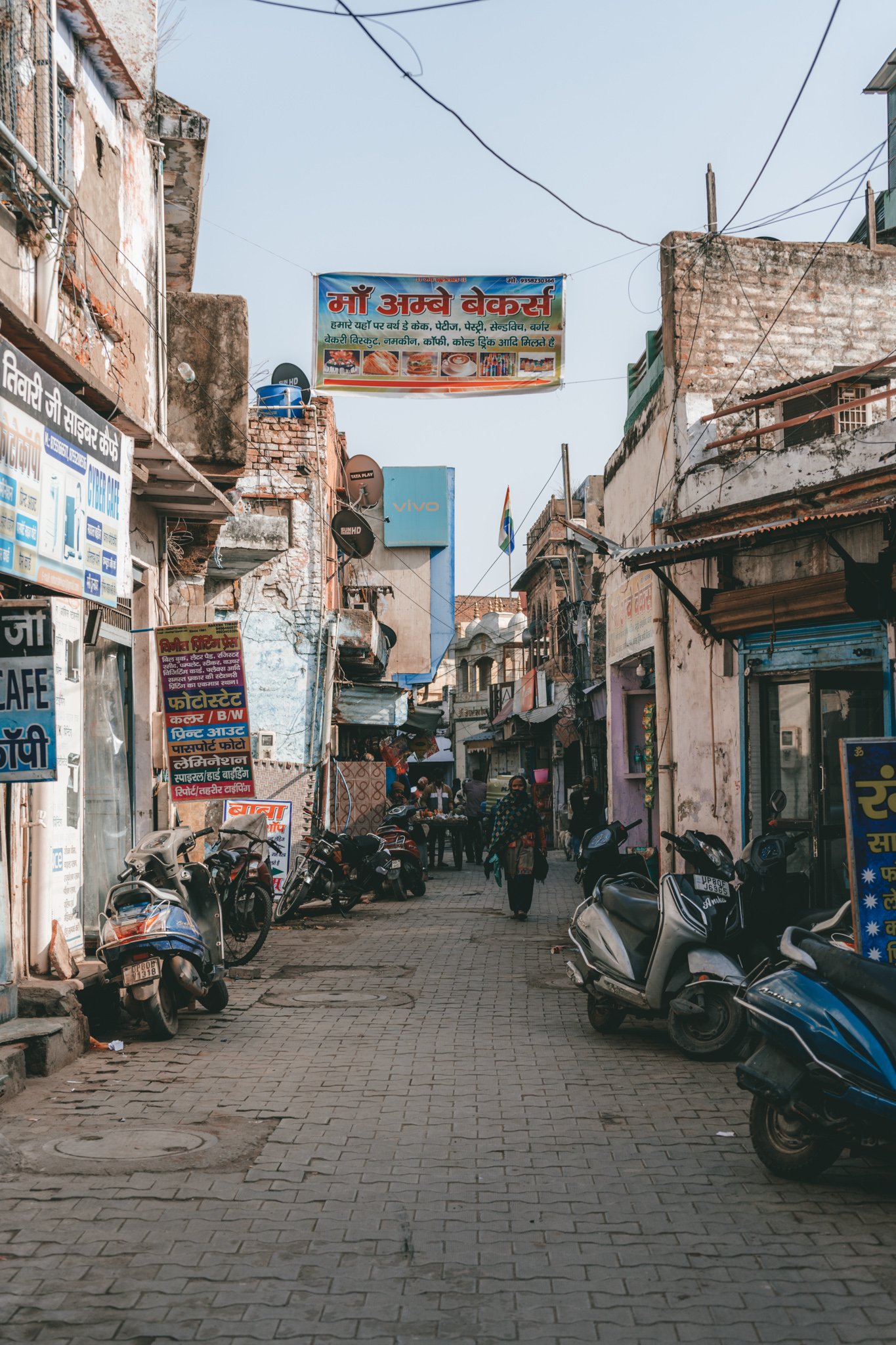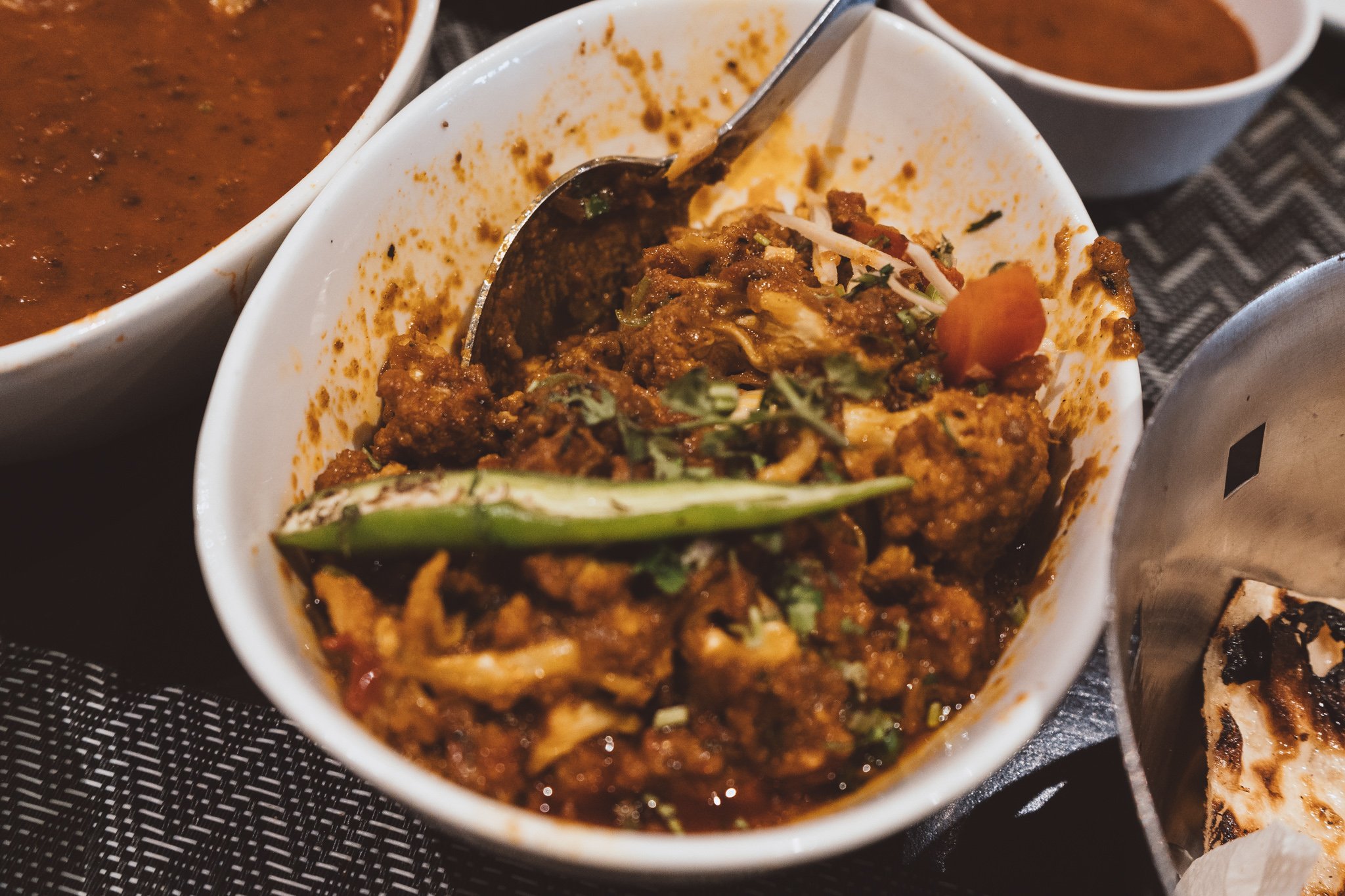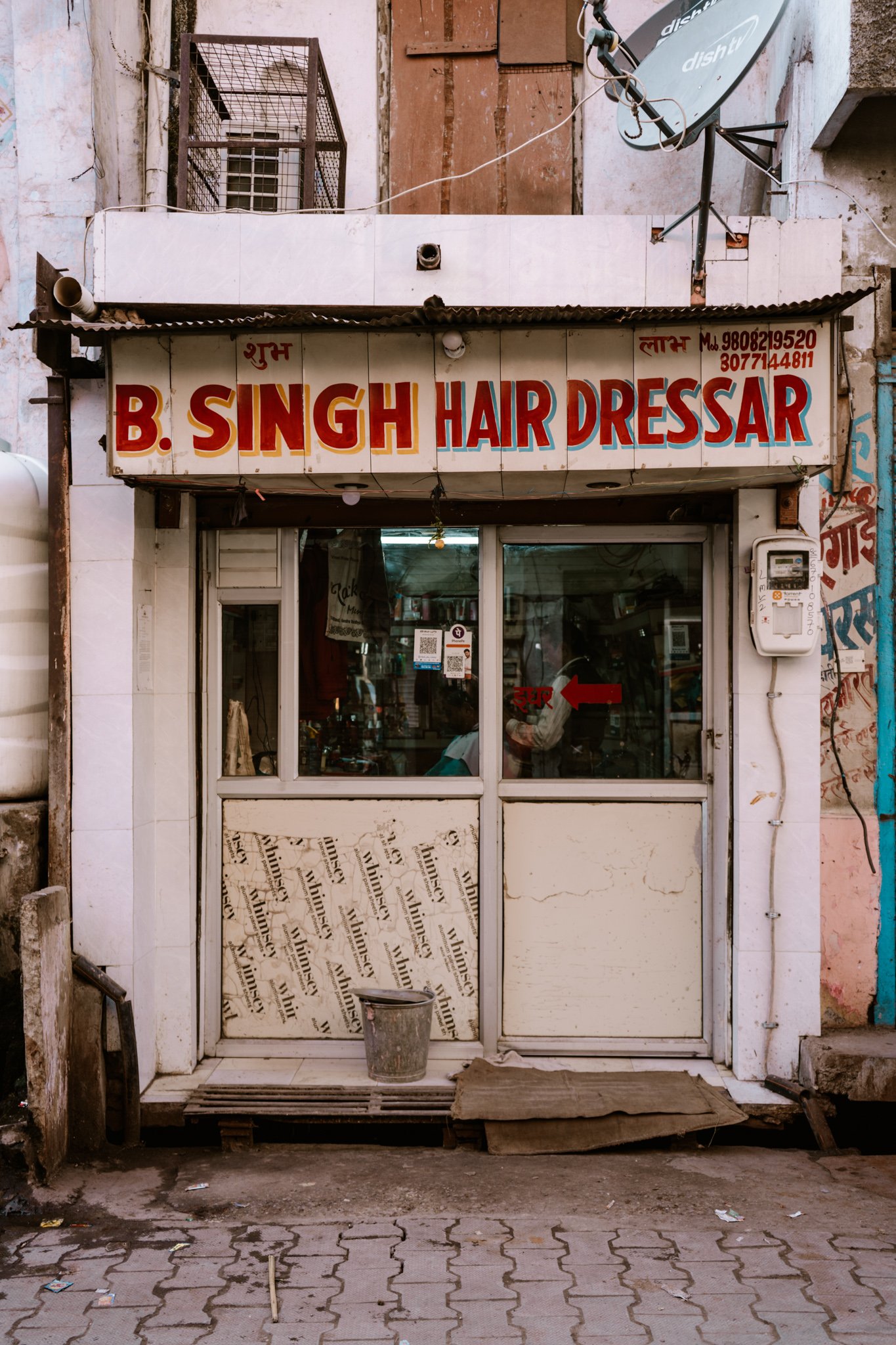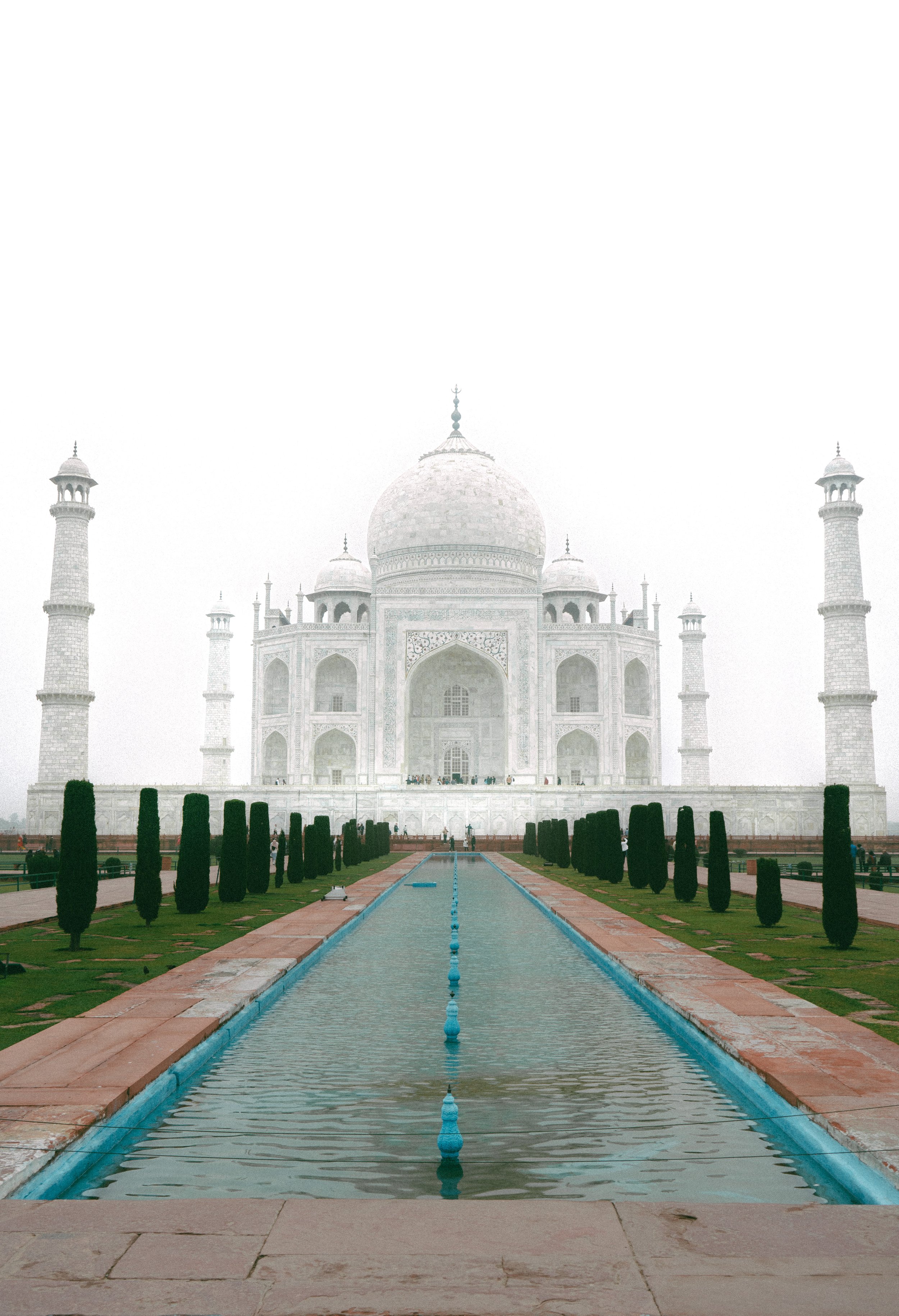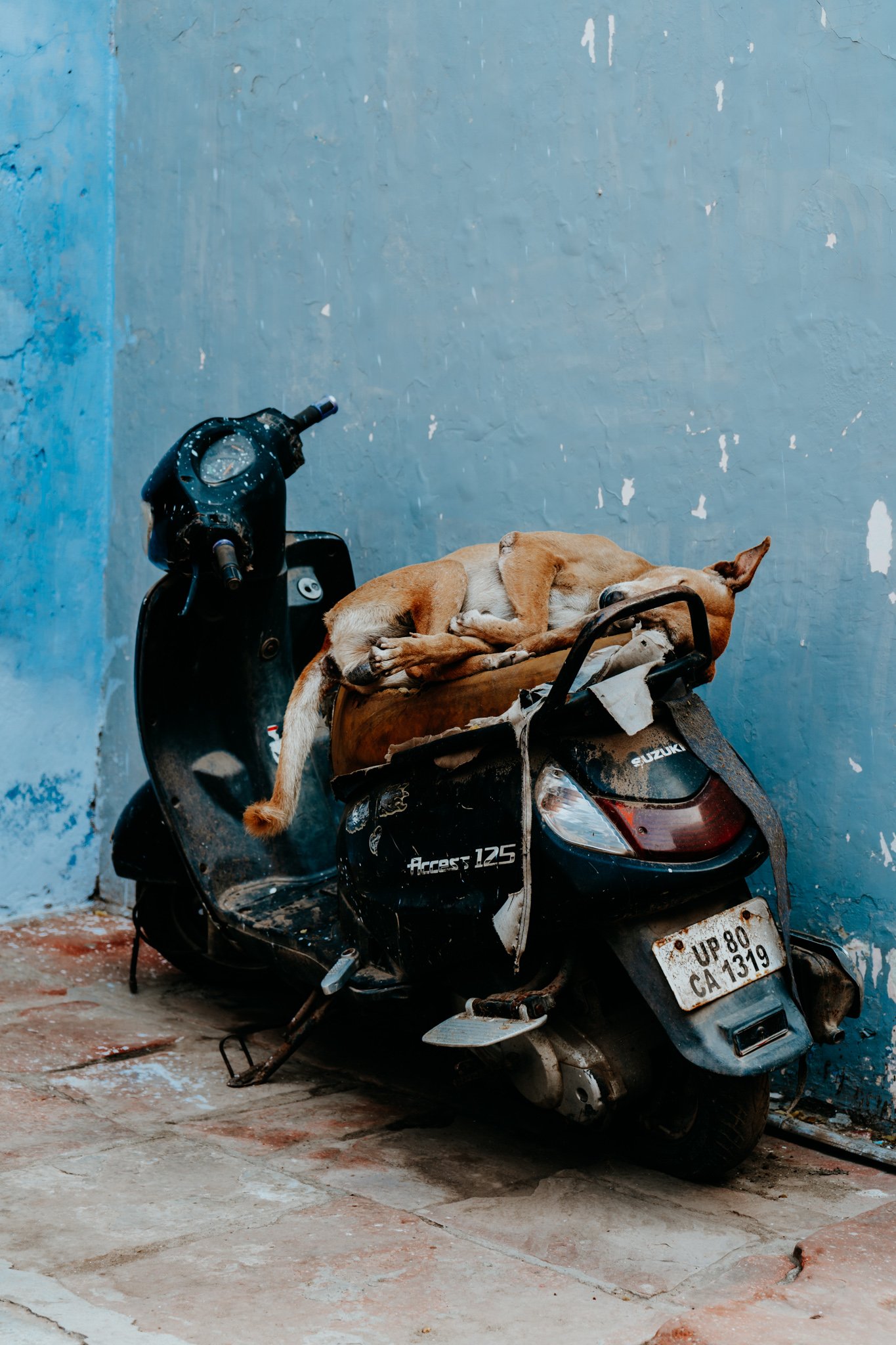What to Do in Agra, India (besides the Taj Mahal): 10 Best Things to Do in Agra
This post is a complete guide to Agra including 10 things to do (besides visiting the Taj Mahal)
Agra is one of India’s most visited cities; best known for its Mughal history, housing one of the Seven World Wonders, and being the third apex in the “Golden Triangle”. While you may be tempted to tag Agra onto your India itinerary as a day trip from Delhi, the city deserves more than just a passing glance. There are plenty of things to do in Agra (besides the Taj Mahal) including three UNESCO World Heritage Sites, a number of culturally significant landmarks, and lots of delicious restaurants.
So many fellow travellers told me Agra was, well…a hole. But I genuinely enjoyed my time there! People warned Luke and I of Agra’s scams, dirtiness, and unfriendly residents, but we found the exact opposite to be true. Overall, I found the city to be pleasant. The locals were friendly, the food was remarkably cheap (even by India’s standards), and the attractions we went to were well-kept. My unpopular opinion is that Agra was not nearly the worst of the places I visited in India. Perhaps I’m in the minority, or maybe we had a fantastic experience on a total fluke, but I stand by saying Agra is worth spending a few days in to explore it in its entirety.
The city is visited by millions of tourists every year, primarily eager to lay their eyes on the Taj Mahal, but in this post, I’m sharing the lesser-known things to do in Agra and what makes the city worth travelling to for more than a day. In this guide, you’ll find everything you need to know before you visit Agra, including where to eat, where to stay, and what to do while you’re there.
Where is Agra + how to get there↴
Agra sits on the banks of the Yamuna River in the Uttar Pradesh state of India. It’s roughly a 3.5-hour drive south of India’s capital city, Delhi and a 4-hour drive east of Jaipur in Rajasthan. Agra, Delhi, and Jaipur actually make up the three corners of what is referred to as the “Golden Triangle.”
Because Agra is such a frequented Indian destination, it’s extremely well-connected to other cities via trains, highways, and a domestic airport (though flight options are limited). If you’re looking at arriving via train, know that Agra has several train stations but Agra Fort and Agra Cantt stations are the two closest to the city center. The Gatimaan Express train from Hazrat Nizamuddin railway station in Delhi only takes roughly 2 hours to get to Agra Cantt station, making it the choice of many travellers.
Not brave enough for the train just yet? Don’t worry! You can hire a private car, take a bus, or use the Uber app. We took an Uber from Delhi to Agra. It set us back approximately 70 (inclusive of tolls and taxes) but it meant that we arrived when we wanted to and we didn’t have to stress about our luggage (of which there was a LOT). Once we made it out of Delhi, the roads were relatively traffic-free and open. As mentioned, there are also buses headed to Agra daily. The redBus website shares up-to-date information about pricing and bus timetables.
You can also book a day tour to Agra from Delhi, which typically is inclusive of your transport and is fine if you are short on time.
how long to spend in Agra + when to visit ↴
There are so many things I wish I knew before travelling to India. One of the biggest questions I had while planning our 2-month trip across the North of the country was how long to spend in Agra. I had read blog posts suggesting spending as little time as possible there and others recommending doing Agra as part of my time in Delhi by way of a day trip. Others still suggested spending the night before you visit the Taj Mahal in Agra to guarantee a sunrise view. As an advocate for slower travel, I landed on spending 3 nights in Agra for the following reasons.
1) We could plan around the weather: We visited Agra in January and, days before we arrived, there had been heavy rain. The rain overnight meant low morning visibility, which would have been less than ideal. Visiting for more than a day meant we could learn the lay of the land and plan around good weather.
2) We weren’t rushed: We met two other couples who had only a single day to squeeze in all of Agra’s attractions, leaving little time for them to wander the alleyways. Worse yet, they said they felt rushed at the Taj Mahal and Agra Fort arguably the two biggest attractions in Agra.
Overwhelmingly, the best time to visit Agra is during the winter (October to February). Summer in India fluctuates between monsoon downpours and indescribable heat. One thing to keep in mind is that visibility in the winter months isn’t always great. Between October and January there is often thick fog covering the Taj in the mornings and the early hours of the day are freezing cold. Take this into consideration when planning and come prepared with the right attire.
where to stay in Agra ↴
Agra has no shortage of budget accommodation, and most of it is located south of the Taj Mahal in the Taj Ganj area of the city. Chances are, if you’re visiting Agra, you’re probably coming to see the Taj Mahal. This area is filled with rooftop cafés and cheap hostel stays. If this sounds like a fit for you, then I highly recommend staying at either Joey’s Hostel or Coral Homestay. Both have exceptional reputations in Agra for providing clean rooms (private and dorm) in close proximity to the Taj Mahal’s gates. This will make a sunrise mission to see the World Wonder heaps easier.
We decided to stay at Joey’s Hostel during our time in Agra. The private room we booked was definitely basic, but it had everything we needed, including a hot shower, security, and working WiFi (digital nomads know). It also has a rooftop café with a clear view of the Taj in the background.
We love using Booking.com to book the best places to stay around the world.
where to eat in Agra ↴
Agra might be a small city by Indian standards, but there are plenty of places to eat and we hit so many in a short timespan.
Joney’s | opens early and makes everything fresh to order, great pancakes, friendly staff
Good Vibes Café | cheap, quality Indian food in a casual atmosphere, frequented by budget travellers
Sheroes Hangout | basic food served in support of acid attack survivors
Peshawri | considered Agra’s best luxury dining experience
Sankara Veggie Restaurant | down the road from Joey’s Hostel, vegetarian Indian dishes
The Hippie Café | a rooftop café on the top of Joey’s Hostel, delicious Indian cuisine
Pinch of Spice | upscale interiors serving classic Indian cuisine done to perfection
The Salt Café | loads of veggie options, Greek food on a terrace with views of the Taj
10 best things to do in Agra ↴
Taj Mahal
I had to add the Taj Mahal to this guide in order for it to be comprehensive. Because while, no, it isn’t the only thing to see in Agra, it is arguably the most culturally significant. It is also simultaneously the backdrop and the centerpiece of the entire city of Agra.
The Taj Mahal is one of the Seven World Wonders. Its story begins and ends with the Mughal Emperor Shah Jahan’s epic love for his third wife. The romance was legendary, and throughout the kingdom, it was known how deeply he loved her. When she died, the emperor was said to have been utterly inconsolable. Entrenched in grief, he commissioned the construction of a giant, white marble mausoleum to immortalize her and their love. Today, the Taj Mahal is the centerpiece of a 42-acre complex that includes a mosque and formal gardens. it’s frequented by millions of visitors every year and remains a symbol of true love recognized around the world.
Some quick tips for visiting the Taj Mahal:
Book your tickets in advance online to save time, and note that the Taj is closed on Fridays
Bring as little with you as possible: Bags are not allowed inside and must be stored in a locker, which means waiting in the locker line (adding to the time it takes to enter)
Tripods are not allowed: If you want photos of yourself as a solo traveller or as a couple together, you'll need to either A) hire a guide who will take photos of you or B) find another solo traveller/couple and ask to have your photo taken
Getting to the Taj for sunrise is imperative if you want photos without people in them
Gates open 30 minutes before sunrise, but you’ll need to queue up an additional half hour before opening to be ahead in the line (there were people in line an hour before entry when we visited)
ADMISSION | 1100 rupees for foreign visitors, plus 200 rupees per foreign visitor for entrance into the tomb
Taj Nature Walk
The Taj Nature Walk has many trails provide some much-needed peace away from the noise of Agra city center, without actually being a great distance away from the city. If you keep your eyes peeled, you might even see a peacock or hyena!
ADMISSION | 100 rupees for foreigner visitors
Mehtab Bagh
Mehtab Bagh sits across the Yamuna River from the Taj Mahal. Its botanic garden, sometimes called the Moonlight Garden, has one of the best viewpoints of the Taj in the city outside of the actual Taj Mahal complex! Legend has it Emperor Shah Jahan wanted to build himself a black marble mausoleum directly opposite to the Taj Mahal here, but he was instead buried inside the Taj next to his late wife. Although it is unclear whether or not he really wanted a black Taj built or not, you can see how it would have been visually the perfect location for the parallel.
Agra Fort
I believe the second most impressive landmark in Agra is its fort. Agra Fort, sometimes known as the Red Fort, was built in 1565 and it took eight years to complete. The fort served as the residence of the Mughal Dynasty until the capital was moved from Agra to Delhi in 1638. We spent over two hours waltzing throughout the fort complex, and honestly could have spent more. Don’t miss the views of the Taj Mahal from the back of the fort!
ADMISSION | 600 rupees for foreign visitors (you can book online for 550 rupees, but you’ll be asked to pay the extra 50 rupees when you arrive at the entrance gate)
Yamuna River boat ride
Since the Taj Mahal is closed on Fridays, those visiting can get a glimpse of the World Wonder by taking a boat ride along the Yamuna. Full disclosure: the wooden rowboats are in questionable condition. They can be found parked up on the muddy banks of the river with boatmen waiting to negotiate a ride price. If you are visiting on a Friday, prepare to pay more. The men who own these businesses know that tourists are keen for a photo with the Taj and will make you pay for it. Any other day you might have better luck haggling.
COST | 300-700 rupees per 20-minute ride depending on how good of a negotiator you are
eat at Sheroes Hangout
I listed Sheroes Hangout as one of the places to eat in Agra, but it is worth mentioning again and adding it officially to your itinerary as a thing to do. Honestly, the food at Sheroes isn’t anything remarkable itself, but its mission makes it a can’t miss. The women who operate Sheroes are primarily survivors of severe chemical burns and acid attacks. Acid attacks in India are increasing with every year with 300 incidents reported in 2020. Perpetrators of acid attacks throw corrosive liquids at their victims, typically on their faces with the intent to cause blindness, damage skin tissues, and dissolve facial bone. Sheroes was set up by the Chhanv Foundation with the aim to increase acid attack awareness and empower survivors of these violent attacks.
NOTE: There is a second Sheroes Hangout location in Lucknow!
tomb of I’timād-ud-Daulah
Often known as the Baby Taj or the Bachcha Taj, the tomb of I’timād-ud-Daulah is another Mughal mausoleum in Agra. It was built by Empress Nur Jahan for her father Mirzā Ghiyās Beg, who was known by his title I’timād-ud-Daulah, meaning pillar of the state. Completed in 1628, this mausoleum was one of the first Mughal structures to have ever been built entirely in white marble. It’s definitely a sight to behold and worth your time to visit.
Chini ka Rauza
Near the Tomb of I’timād-ud-Daulah is Chini ka Rauza, another tomb in Agra. It is the final resting place for Shukrullah Shirazi Afzal Khan ‘Allami’, a Persian scholar and poet. Shukrullah Shirazi Afzal Khan ‘Allami’ eventually became the Prime Minister of Emperor Shah Jahan (yes, the same emperor who commissioned the Taj Mahal). Chini ka Rauza is worth going to if you like finding quieter, hidden gem-type spots. Covered in hand-laid tile work and inscripted with messages from the Quran, this place is beautiful but quickly deteriorating due to lack of maintenance and weather decay. This lesser-known landmark is still worth seeing, albeit less impressive than other finerary sites in Agra.
ADMISSION | free
tomb of Akbar
A five-story tall mausoleum made with red sandstone and white marble— the Tomb of Akbar is an impressive example of mughal architecture and aesthetics. When we went there was hardly any other visitors, despite it being midday, making it a photographers dream (no crowds in India is rare indeed).
ADMISSION | 250 rupees for foreign visitors, plus tax
tomb of Mariam-uz-Zamani
Only a 5-minute drive from Akbar’s tomb is the tomb of Mariam-uz-Zamani. This is the final resting place of Mughal Emperor Akbar’s favorite wife and was built by their son. lies another Mughal mausoleum in Sikandra. If you are making the trip to Sikandra to see Akbar’s tomb, you might as well tack on Mariam’s tomb.
ADMISSION | 250 rupees for foreign visitors
map ↴
Find the best things to do in Agra, India (besides the Taj Mahal) on the map below.

